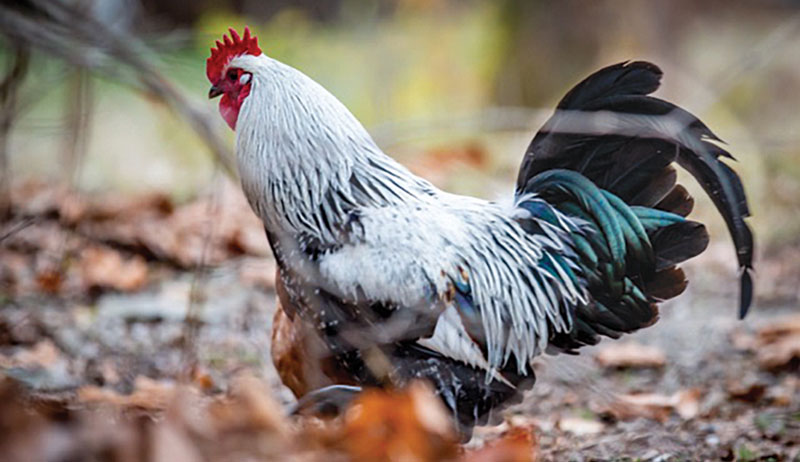You can find nine chicken breeds named after the state in which they originated. But only three states have a chicken as an official symbol. Rhode Island has the Rhode Island Red, New Hampshire has the New Hampshire chicken and Delaware has the Blue Hen.
Here’s a look at each of the chicken breeds named after their state of origin.
Buckeye
Nettie Metcalf of Warren, Ohio, developed the Buckeye as a dual-purpose farmstead chicken that adapts well to cold weather. It’s the only breed classified as American that has a pea comb, a feature that helps it survive Ohio’s bitter winter weather.
When this breed was developed during the late 1800s, it was originally called Pea Comb Rhode Island Red. But that name did not enhance the breed’s popularity. So, since it originated in the Buckeye State, the breed name was changed to Buckeye.
Buckeye chickens come in large and bantam sizes and a single color: a rich reddish brown of about the same shade as a buckeye nut. The hens lay eggs with brown shells and also brood easily.
Although the buckeye tree is the Ohio’s official state tree, the state bird is the Cardinal. Ohio has no official state chicken. You can find more information on this breed on the website maintained by the American Buckeye Poultry Club.

Read more: Looking for something new? Check out these 20 chicken breeds!
California Gray
The concept of the California Gray originated in the early 1920s in Corvallis, Oregon, where Professor James Dryden at Oregon Agricultural College (now Oregon State University) crossed barred Plymouth Rocks and white Leghorns to develop a superior white-egg layer. Dryden called his hybrid creation the Oregon.
Ironically, crossbreeding was considered to be heresy at that time. The Oregon legislature even debated eliminating the college’s poultry department.
Upon retiring, Dryden moved to Modesto, California, where his son Horace continued a similar breeding program that eventually led to the development of a new breed. Called the California Gray, its introduction to the public came in 1949.
This breed has a single comb, has no bantam counterpart and comes only in a barred pattern that is autosexing (pullets are darker than cockerels). At maturity, a hen’s barring is white and dark gray, a cock’s barring is white and light gray.
The hens lay white-shell eggs and seldom brood.
The California Gray is known for its gentle temperament and outstanding egg production. Now quite rare, this breed is also used primarily to produce California White hybrid layers.
California has no state chicken. The state bird is the California quail.
Delaware
The Delaware breed was developed in the 1940s from silver sports arising from hybrid broilers created by crossing barred Plymouth Rock cocks with New Hampshire hens. George Ellis, owner of the Indian River Hatchery in Ocean View, Delaware, collected some of these sports to breed back to New Hampshire hens….
Read the rest here





